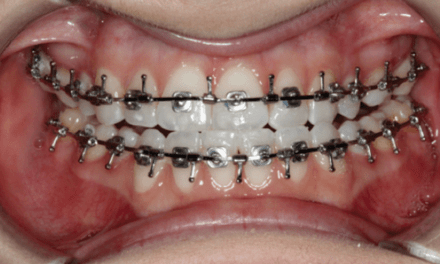By George Kyritsis, DMD, Montréal

As a result, many dental regulatory bodies in the United States and Canada have adopted the following CDC recommendations to improve patient safety:
- All semicritical instruments that come into contact with mucosal tissues should be wrapped prior to heat sterilization. Orthodontic pliers are considered semicritical items because they regularly touch the oral mucosa.
- Hinged instruments should be sterilized in an open position, as steam or other sterilant cannot reach the two contacting metal surfaces between the jaw-tips when they are closed.
- A chemical indicator should be placed inside each package to validate the sterilization process.
- The sterile instruments should remain packaged and stored safely until their use.
A few years ago, these newer regulations prompted our office to adopt the following infection control measures:
- We have switched from dry heat sterilization to large-capacity automated autoclaves (Midmark’s M11 sterilizer), as most dry heat sterilizers do not allow wrapping of instruments prior to sterilization.
- All our instruments, including pliers, are wrapped prior to sterilization using Adenta’s IDEAL Orthodontic Sterilization Pouches. These “V-shaped” pouches allow hinged instruments to be sterilized in an open position. They are equipped with external and internal chemical indicators that change color after sterilization, allowing our staff to readily recognize processed instruments from nonsterilized items.
- Due to the unique shape of the IDEAL Sterilization Pouches, the pouched pliers can be properly stored on Adenta’s IDEAL Plier Racks.
We found it very easy to implement the CDC sterilization guidelines in our office with the use of the IDEAL Sterilization Pouches. We did not have to remodel for additional storage space, and productivity has not suffered. Actually, our instrument turnover is extremely efficient with the new system.
We use the IDEAL Mini Racks to organize instruments in kits for specific procedures. All other specialty pliers such as bending pliers, three-prong pliers, and cinch-back pliers are stored on the IDEAL Circular Rotating Racks near chairside for quick and easy access. One significant advantage we have noticed over our initial cassette system is that we are not forced to reprocess unused instruments. Only the sterile instruments necessary for a specific procedure are unpackaged onto the operatory field.
Many patients and parents notice our state-of-the-art sterilization protocol. We have found that showcasing packaged pliers is as important a practice builder as branding clear and self-ligating brackets.





